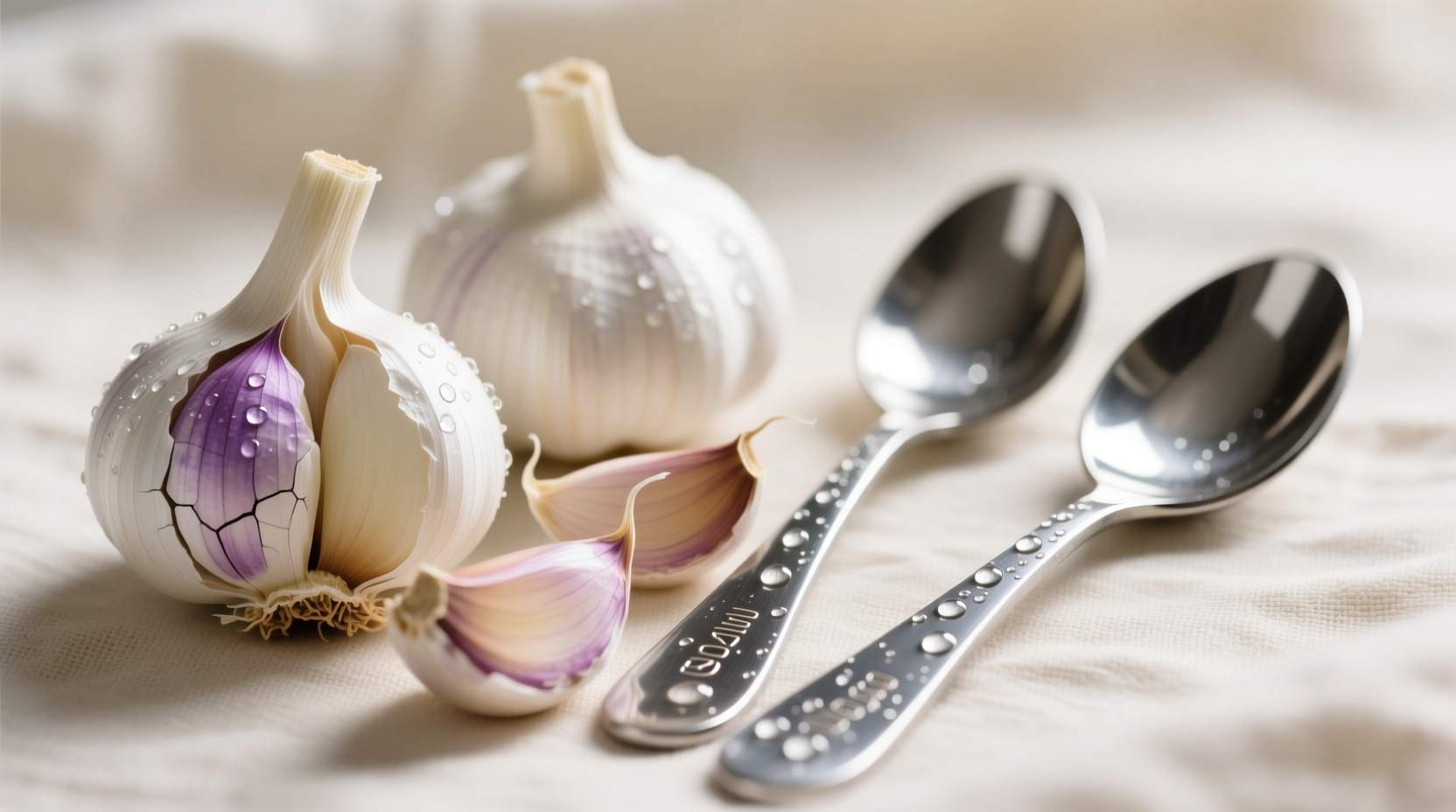When you're mid-recipe and need to convert garlic cloves to tablespoons, getting the measurement right makes all the difference between a perfectly seasoned dish and an overpowering one. Whether you're preparing Italian pasta sauce, Asian stir-fry, or Middle Eastern dips, understanding garlic measurements is essential for consistent cooking results.
Why Garlic Measurement Accuracy Matters
Garlic's potent flavor can transform a dish from bland to brilliant—but only when used in the right proportions. Too little leaves your recipe lacking depth, while too much creates an unpleasantly sharp taste that dominates other ingredients. Professional chefs know that precise garlic measurements are non-negotiable for recipe consistency, especially when cooking for others or scaling recipes up or down.
According to the USDA FoodData Central, garlic composition varies slightly based on growing conditions, which affects its density when minced. This explains why conversion guidelines provide ranges rather than absolute values.
Garlic Clove to Tablespoon Conversion Guide
Garlic clove sizes vary significantly, which impacts your final measurement. Here's a detailed conversion chart based on standard culinary measurements verified by the Culinary Institute of America's professional cooking references:
| Garlic Clove Size | 1 Clove Yield | 6 Cloves Yield | Best For |
|---|---|---|---|
| Small (½" long) | ¼ tsp minced | 1½ tsp (½ tbsp) | Delicate sauces, fish dishes |
| Medium (¾" long) | ½ tsp minced | 3 tsp (1 tbsp) | Most recipes, general cooking |
| Large (1"+ long) | 1 tsp minced | 2 tbsp | Robust dishes, roasted preparations |
For the most accurate measurement, always mince your garlic before measuring rather than estimating by whole cloves. The texture and moisture content significantly affect volume. As noted in The Professional Chef (9th edition) by the Culinary Institute of America, "garlic's irregular shape makes volume measurements more reliable than counting cloves when precision matters."

Practical Measurement Techniques for Home Cooks
When your recipe calls for "6 cloves of garlic" but you need tablespoons instead, follow these professional techniques:
- The Mince-and-Scoop Method: Peel all cloves, mince finely using a chef's knife or press, then pack the minced garlic into a measuring spoon, leveling off the top.
- The Water Displacement Trick: Place minced garlic in a tablespoon measure, then add a few drops of water to help it settle evenly before leveling.
- The Visual Reference System: Recognize that six medium cloves roughly fill the space of a standard walnut before mincing.
Food science research from the USDA National Institute of Food and Agriculture confirms that minced garlic contains approximately 0.85 grams per milliliter, which explains why volume measurements work better than weight for small quantities in home cooking.
Avoiding Common Garlic Measurement Mistakes
Many home cooks make these critical errors that throw off their recipes:
- Counting cloves without considering size variation - A single large clove can equal three small ones
- Measuring before mincing - Whole cloves have air gaps that disappear when minced
- Using heaping rather than level measurements - This can increase garlic content by 30-50%
- Not adjusting for garlic age - Older garlic dries out, yielding less volume when minced
Professional chefs recommend tasting as you go when working with garlic, especially when converting between whole cloves and volume measurements. The American Council on Food Intelligence notes that garlic's allicin content—which creates its characteristic flavor—varies by season and storage conditions, affecting potency even with identical measurements.
Maximizing Garlic Flavor in Your Cooking
Understanding measurements is just the beginning. How you prepare garlic affects its flavor profile:
- Raw garlic provides the strongest, most pungent flavor (use 25% less when substituting for cooked)
- Sautéed garlic mellows significantly (use 20-30% more than raw for equivalent flavor)
- Roasted garlic becomes sweet and spreadable (6 cloves yield about 1½ tsp of paste)
For international recipes specifically calling for 6 cloves of garlic, remember that European garlic tends to be larger than Asian varieties. When following authentic recipes, consider the garlic's origin for the most accurate conversion.
Frequently Asked Questions
Here are answers to the most common questions about garlic measurements:











 浙公网安备
33010002000092号
浙公网安备
33010002000092号 浙B2-20120091-4
浙B2-20120091-4